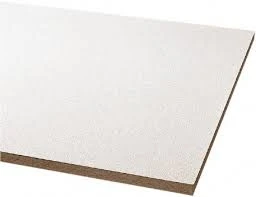Dec . 03, 2024 19:30 Back to list
Appropriate Dimensions for Standard Ceiling Access Panels in Various Applications
Understanding Standard Ceiling Access Panel Sizes
An access panel is a crucial component in construction and building maintenance. It serves as an entry point to facilitate access to areas that are otherwise concealed, such as plumbing, electrical systems, and HVAC components. One of the key considerations when installing an access panel is its size. This article will delve into the standard sizes of ceiling access panels, their importance, and how to properly select the right size for your specific needs.
Importance of Access Panel Sizes
The size of an access panel is critical for several reasons. Firstly, it must be large enough to provide adequate access to the components that require maintenance or inspection. Secondly, it should fit seamlessly into the structure without compromising the integrity of the ceiling. An ill-fitting access panel can lead to unnecessary complications, such as damage to surrounding materials or difficulty in accessing the serviced area.
Moreover, building codes and regulations often dictate certain standards for access panel sizes in commercial and residential buildings. Compliance with these regulations is essential not only for safety but also for ensuring efficient repairs and inspections.
Standard Sizes of Ceiling Access Panels
Access panels come in various sizes, but there are some standard dimensions that are commonly used across the industry. The most typical sizes for ceiling access panels are
1. 12 x 12 inches This is a popular size that is often used for smaller access points. It is ideal for accessing electrical junction boxes or small plumbing fixtures.
2. 14 x 14 inches Slightly larger than the previous size, this panel is often chosen for slightly bigger tasks, such as accessing ductwork or larger electrical components.
3. 16 x 16 inches This size is great for moderate access needs, including A/C units or multiple plumbing pipes clustered in one area.
4. 24 x 24 inches Known for being one of the most commonly used sizes in commercial buildings, this panel is suitable for larger areas that require frequent maintenance, such as wiring closets or HVAC units.
standard ceiling access panel size

It’s important to note that these are just standard sizes, and access panels can be customized according to specific requirements. When selecting an access panel, it’s essential to measure the area and consult with professionals to find a suitable size that meets your needs.
Factors to Consider When Choosing an Access Panel Size
When deciding on an access panel size, several factors should be taken into account
1. Type of Service Consider what you need to access. Some systems may require larger openings for ease of access.
2. Location The location of the panel within the ceiling can affect the size needed. For instance, a panel located in a tight hallway may necessitate a smaller size compared to one in an open area.
3. Building Codes Always check local building codes and regulations to ensure compliance. Certain areas might have restrictions on access panel sizes.
4. Future Accessibility Think ahead about potential future needs for access. It might be wise to choose a larger size now to accommodate any enhancements in the system later.
Installation Tips for Access Panels
Proper installation of ceiling access panels is vital. Ensure that the frame is secured to avoid any sagging or misalignment over time. If the ceiling is drywall, use the proper tools to cut the necessary opening, and make sure that it aligns with existing structures. Installing insulation around the edges can prevent heat loss or gain, making the space more energy efficient.
Conclusion
Choosing the correct size for ceiling access panels is crucial for maintaining accessibility and functionality in your building. By understanding standard sizes and the factors that influence your decision, you can ensure that your access points are effective and compliant with necessary regulations. Investing time in selecting the right access panel not only facilitates easier maintenance but also enhances the overall performance of the building's systems.
-
Quality Ceiling Trap Doors & Access Panels | Easy & Secure AccessNewsAug.30,2025
-
Durable Ceiling T Grid Systems | Easy InstallationNewsAug.29,2025
-
PVC Gypsum Ceiling: Durable, Laminated Tiles for Modern SpacesNewsAug.28,2025
-
Pvc Gypsum Ceiling Is DurableNewsAug.21,2025
-
Mineral Fiber Board Is DurableNewsAug.21,2025
-
Ceiling Tile Clip Reusable DesignNewsAug.21,2025







